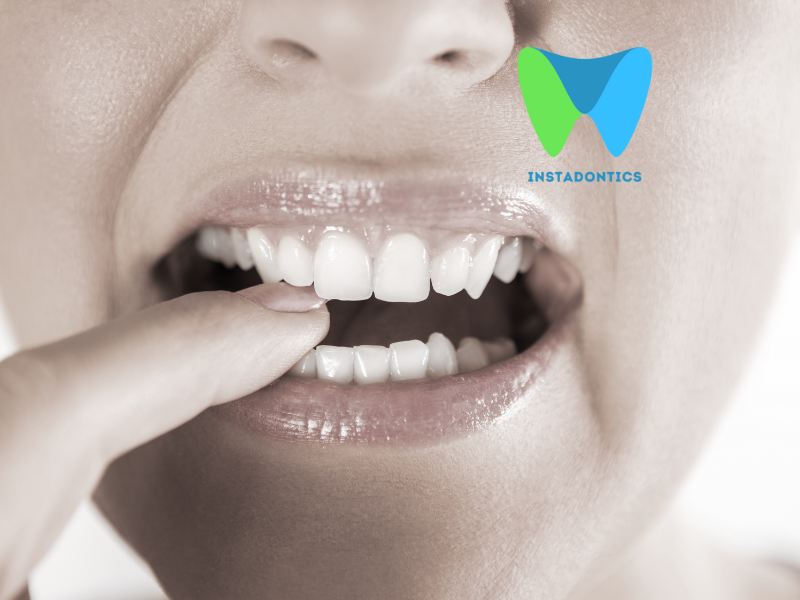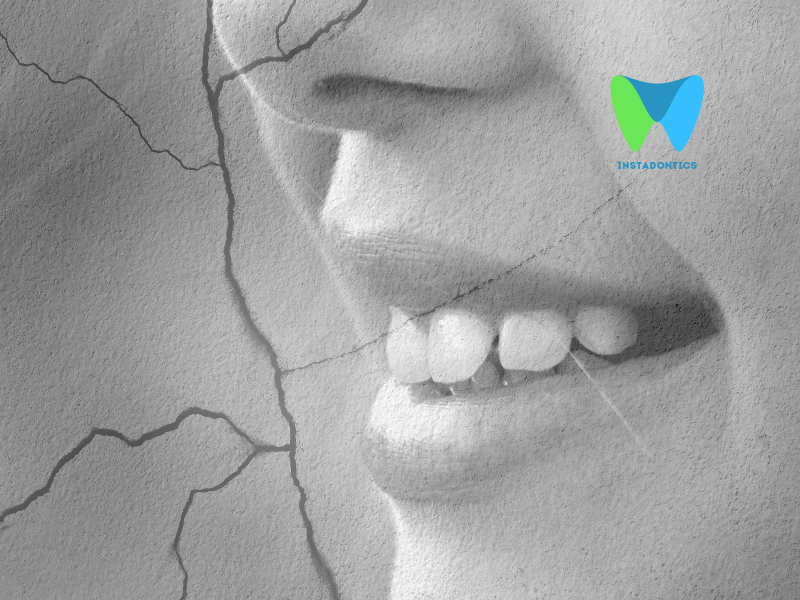White sposts on teeth catch your eye in the mirror. They show up under bathroom lighting, in candid photos, and during awkward smiles when you’re just trying to look confident. White spots on teeth—for some, they’re barely noticeable; for others, they steal the spotlight from every smile.
If you’ve been dealing with these patches, you’ve probably already heard the basics: too much fluoride, bad brushing habits, maybe something you ate. But those answers never quite feel complete—especially when you’ve done everything “right” and still ended up with those uneven marks.
This article goes deeper. We’re not just talking symptoms and surface fixes—we’re talking about the root causes, the emotional toll, and the treatments that go beyond generic whitening advice. You’ll walk away understanding not just what white spots are, but why they happen, what they mean about your dental history, and what you can do—realistically and long-term—to reclaim your smile.
What Causes White Spots on Teeth? It’s Not Always What You Think
There’s a common assumption that white spots are caused by poor dental hygiene, especially during childhood. And while that’s partly true, it leaves out a much bigger story. The truth is, white spots often result from events and exposures that happened years ago—many of which were out of your control.
Fluorosis: The Childhood Catch-22
Most parents are told that fluoride is essential for healthy teeth—and it is, in the right amounts. But there’s a narrow window between “protective” and “too much,” especially in children under the age of eight, when teeth are still forming. When kids are exposed to high levels of fluoride—through drinking water, supplements, or swallowing toothpaste—it can disrupt the way enamel mineralizes. The result is dental fluorosis: a condition where parts of the enamel become opaque, chalky, and visibly lighter than the surrounding surface.
What’s often missed is how varied fluorosis can look. Some people notice faint, almost shimmering streaks; others see rough, white patches or even brown stains in more severe cases. If you grew up with unfiltered well water or were prescribed fluoride drops, this could be a key part of your dental story.
Enamel Hypoplasia: A Hidden Childhood History
White spots can also be a sign that enamel didn’t fully form in certain areas—a condition known as enamel hypoplasia. This isn’t about brushing or toothpaste. It’s about what your body was going through while your teeth were still under the gums.
Fevers, malnutrition, infections, even being born prematurely—all of these can interfere with enamel development. In these cases, the enamel forms thinner or less mineralized in some spots, which appear visibly lighter (or rougher) once the tooth erupts. These patches may also be more prone to cavities, sensitivity, and wear.
You may not remember these early-life events, but your teeth often do.
Demineralization: When Enamel Starts to Break Down
Even fully developed teeth aren’t immune. Acidic foods, sugary snacks, and plaque left on the teeth can slowly draw minerals out of enamel—a process known as demineralization. If you wore braces, you might notice white spots around where brackets used to be. That’s because trapped food and bacteria created micro-acid attacks over time.
This kind of spot isn’t a birthmark—it’s a warning sign. If left untreated, these areas can evolve into full-blown cavities. But caught early, they’re often reversible.
A Surprising Clue: Celiac Disease and Enamel Defects
Here’s a less obvious—but clinically supported—cause: celiac disease. For some people, undiagnosed gluten sensitivity leads to nutrient malabsorption that affects developing teeth. The result? Symmetrical white or yellow spots on incisors and molars. In fact, dentists sometimes spot signs of celiac before physicians do.
If you’ve struggled with digestive issues, fatigue, or anemia—and also have white spots—it may be worth a deeper medical conversation.
Beyond the Surface: The Emotional Cost of White Spots
Most dental professionals will tell you white spots are “cosmetic.” But anyone who’s lived with them knows the toll is much more than aesthetic.
There’s a subtle shift in behavior: covering your mouth when you laugh, hesitating before smiling in photos, second-guessing your first impression. Some patients spend years chasing over-the-counter whiteners, only to realize that whitening often makes the spots more visible—not less.
And when treatments don’t work, the frustration compounds. People begin to feel embarrassed, defeated, even ashamed of something they didn’t cause and can’t seem to fix.
White spots might not be painful—but emotionally? They absolutely can be.
Treatments That Work: Science-Backed, Dentist-Approved
So let’s move beyond guilt and toward solutions. White spots don’t disappear overnight, but with the right approach, they can fade, blend in, or disappear entirely depending on the cause and severity.
Remineralization: A Gentle First Line of Defense
If your white spots are early-stage or caused by demineralization, remineralizing treatments can work wonders—especially with consistent use.
Dentists often recommend MI Paste (which contains calcium and phosphate) or fluoride varnishes. These help replenish the minerals lost in enamel and smooth out contrast. A newer alternative is nano-hydroxyapatite toothpaste, which mimics the exact mineral your teeth are made of—filling in micro-defects naturally.
These options are non-invasive and affordable. But they require patience and routine.
Resin Infiltration (ICON): A Game-Changer for the Right Candidates
One of the most exciting advancements in cosmetic dentistry is ICON therapy. Think of it as a way to “fill in” white spots without drilling. The procedure uses a clear resin that seeps into porous enamel and evens out the color—essentially making the white spots invisible.
It’s painless, doesn’t involve enamel removal, and takes about an hour. However, it works best on younger spots—ones that haven’t hardened over time or developed into deep stains.
For many, ICON is the first time they’ve truly felt like themselves in a smile.
Microabrasion + Whitening: Polishing the Canvas
For spots closer to the surface, dentists may recommend a technique that involves gently removing a microscopic layer of enamel (microabrasion), followed by whitening to blend the shade.
This works well when spots are shallow and contrast with the surrounding tooth color. But it’s not ideal for deep or developmental defects like hypoplasia or fluorosis.
Porcelain Veneers: The Transformative Last Resort
When white spots are severe, widespread, or resistant to less invasive treatments, veneers offer a permanent and transformative solution. These thin porcelain shells cover the entire front surface of the tooth and can mask not just white spots, but irregular shapes, chips, and discoloration.
Yes, they’re costly. And yes, they require removing some enamel. But for those whose self-confidence has taken a hit for years, veneers are more than a cosmetic fix—they’re a psychological reset.
Preventing New Spots: Smart Habits That Go Further
While you can’t change how your teeth developed in childhood, you can prevent new spots from forming in the future.
Fluoride: Respect the Balance
Fluoride is important, but more isn’t better. Children should use the correct amount of toothpaste for their age (a smear for under 3, a pea-sized amount for 3–6). Adults should avoid rinsing right after brushing—allow the fluoride to linger on teeth for better protection.
Food and Drink Matter More Than You Think
Acidic drinks (like sodas, lemon water, or sports drinks) weaken enamel with every sip. Try drinking them through a straw and following with water. Eating cheese, yogurt, and other calcium-rich foods can actually help remineralize enamel.
And sugar? It feeds the bacteria that produce acid. Cut down where you can—especially sticky snacks and frequent sipping.
Dry Mouth Isn’t Just Annoying—It’s Risky
Saliva plays a major role in remineralization. If you deal with dry mouth, whether from medication or dehydration, consider using a hydrating mouthwash like Biotene, chewing sugar-free gum with xylitol, and sipping water frequently.
Final Thoughts: There’s a Path to a Better Smile
White spots are more than an aesthetic flaw. They’re a map of your dental history—childhood exposures, nutritional gaps, even medical conditions you may not have known about. But the good news is this: no matter the cause, there’s a path forward.
Whether you’re starting with remineralizing products, considering ICON, or exploring veneers, the first step is understanding your teeth and what they’ve been through. A qualified dentist can help you decode the story your enamel is telling—and guide you toward the solution that makes sense for your smile, your lifestyle, and your budget.
Key Facts and Statistics
- Dental fluorosis affects approximately 25% of the U.S. population aged 6-49.
- Enamel hypoplasia occurs in about 20% of children ages 6-9.
- Poor oral hygiene is a significant contributing factor in the formation of white spots on around 50% of patients with early tooth decay.
FAQs About White Spots on Teeth
Q1: Are white spots on teeth permanent?
White spots can be permanent, but various cosmetic treatments can improve their appearance. Identifying the underlying cause is crucial for effective treatment.
Q2: Can white spots on teeth be prevented?
Yes, maintaining proper oral hygiene, monitoring fluoride intake, and consuming a balanced diet can help prevent white spots. Regular dental check-ups also play a significant role in prevention.
Q3: Is microabrasion painful?
Microabrasion is typically not painful and requires only minimal discomfort. It is a minimally invasive procedure that safely removes a thin layer of enamel.
Q4: How long do professional whitening results last?
On average, professional whitening results can last from six months to a couple of years, depending on individual habits like dietary choices and oral hygiene practices.
Q5: Can dental veneers cover all types of tooth discoloration?
Dental veneers are effective for covering various types of discoloration, including white spots. However, they may not be suitable for individuals with severe enamel damage or decay.
White spots on teeth, though often harmless, can affect one’s confidence and oral aesthetics. Understanding the causes and available treatments, along with adopting preventive measures, can help maintain a bright, healthy smile. Regular dental visits, good oral hygiene practices, and a balanced diet are key to preventing and addressing this common dental concern.
If you’re experiencing white spots on your teeth, consult with your oral healthcare professional to determine the best course of action tailored to your needs. Brighter, healthier teeth are within reach with the right approach and care.



